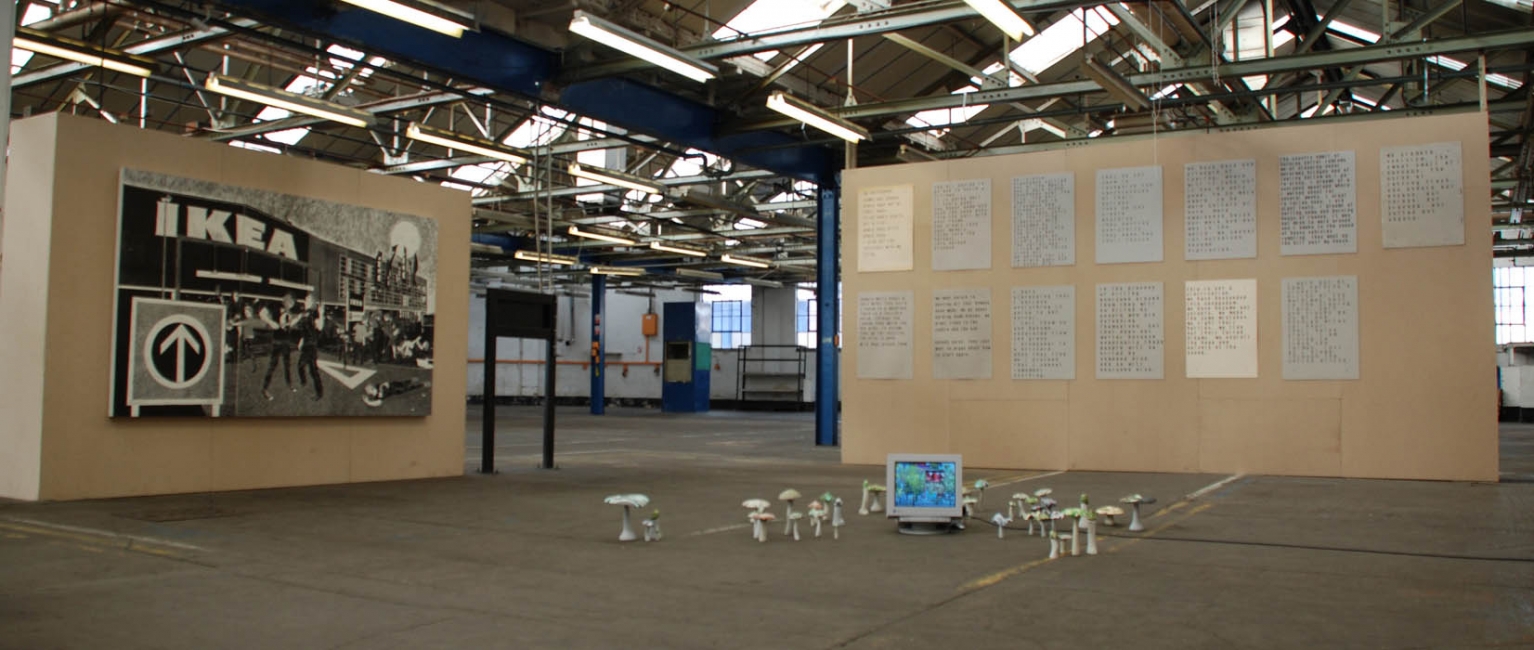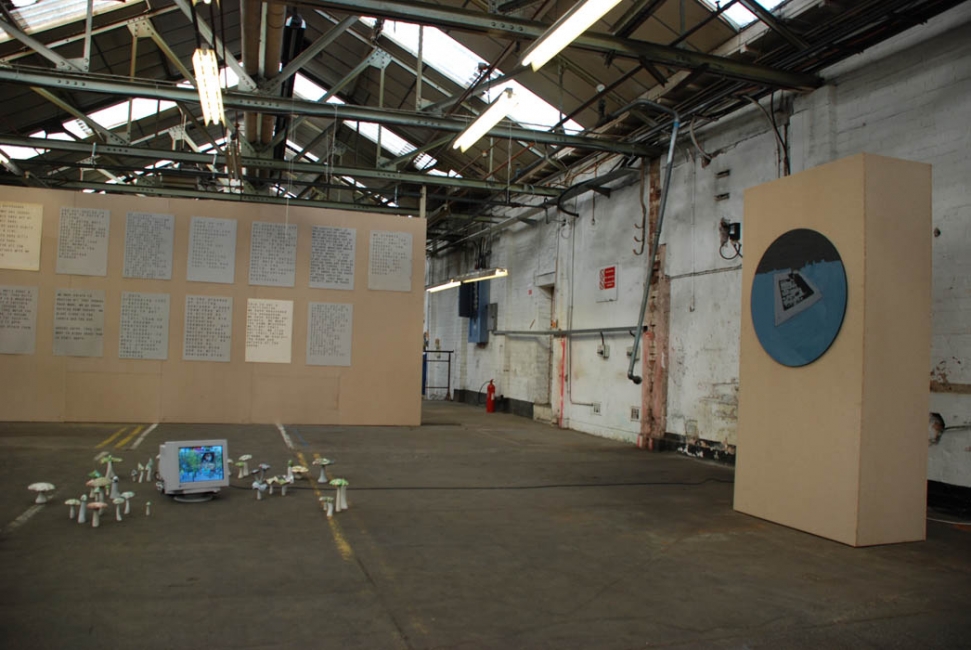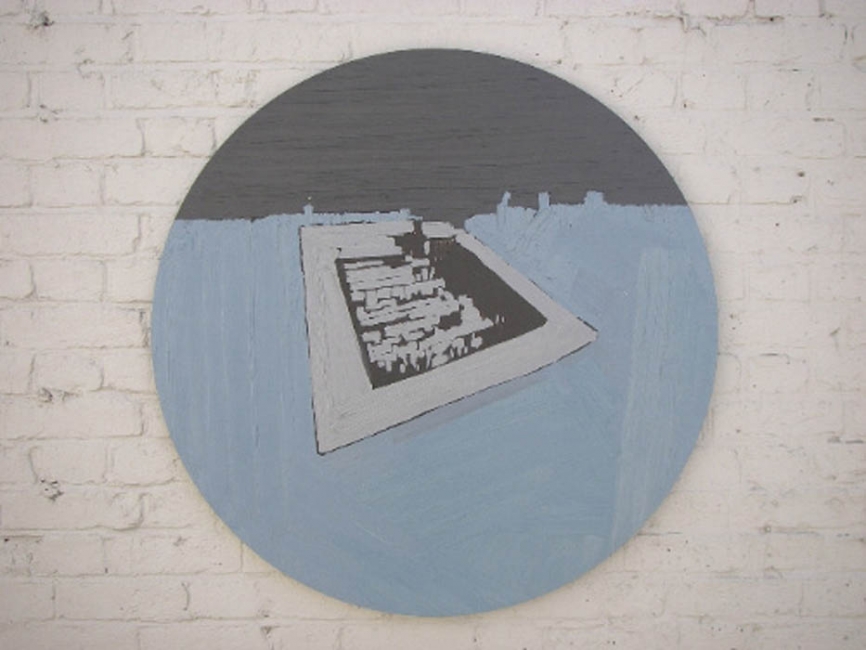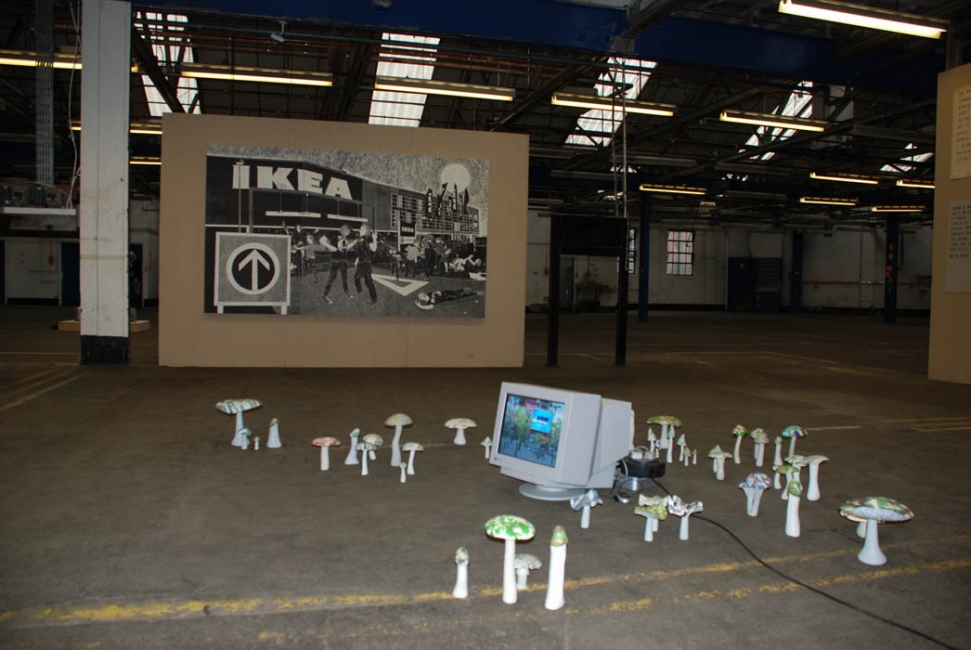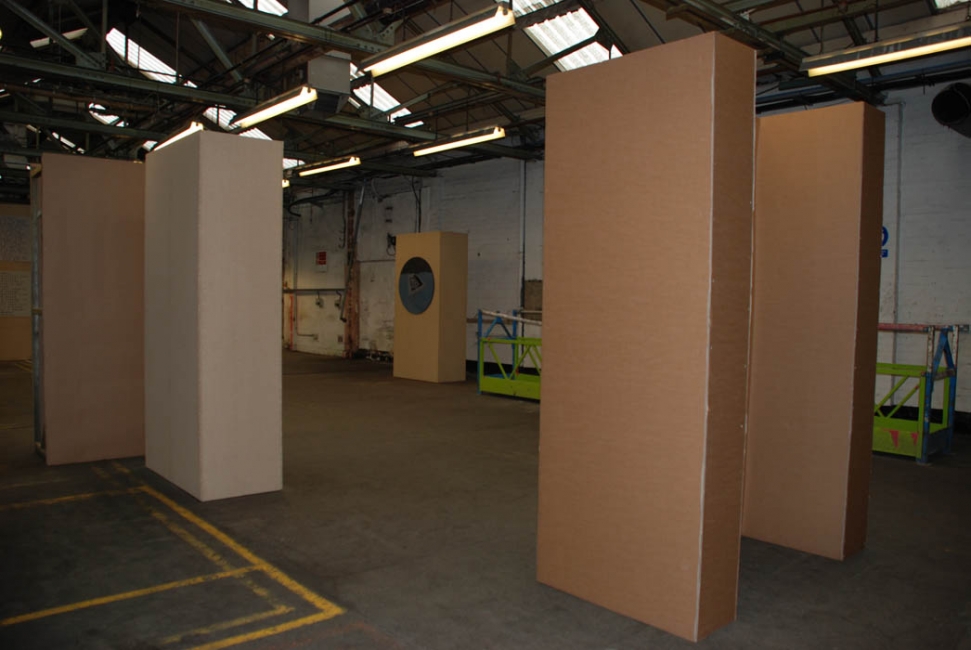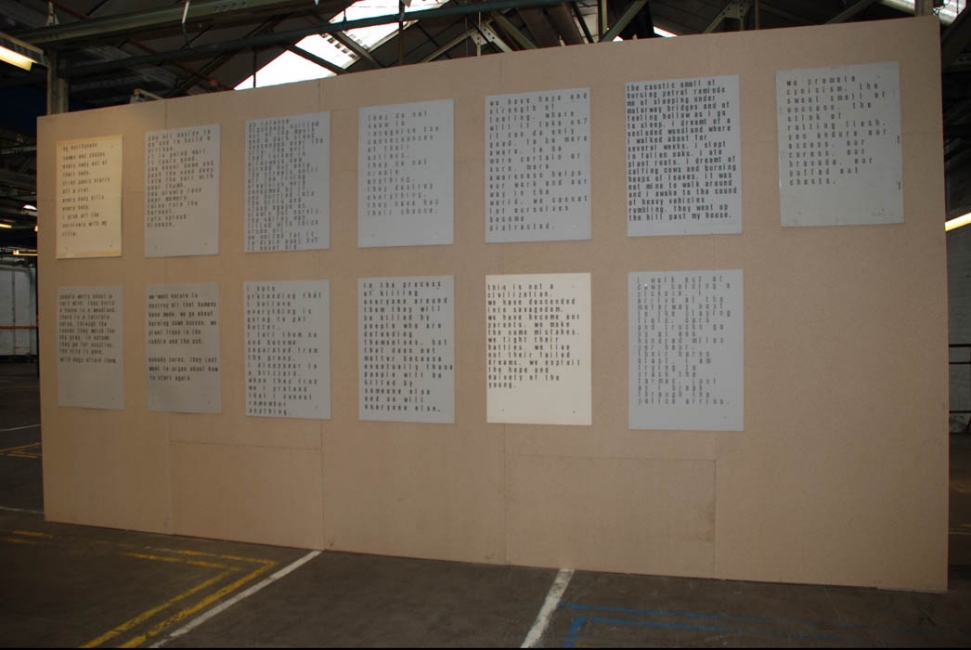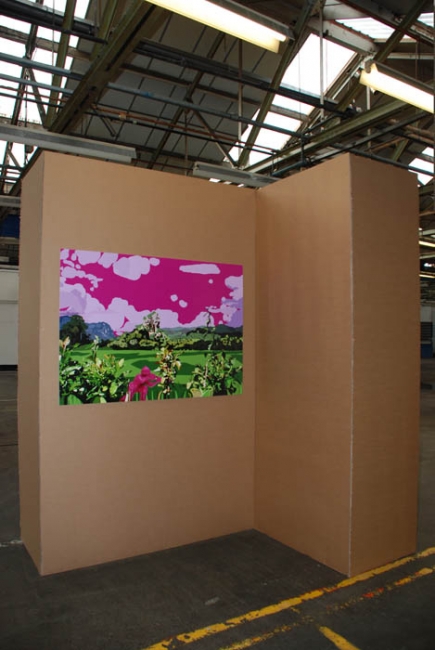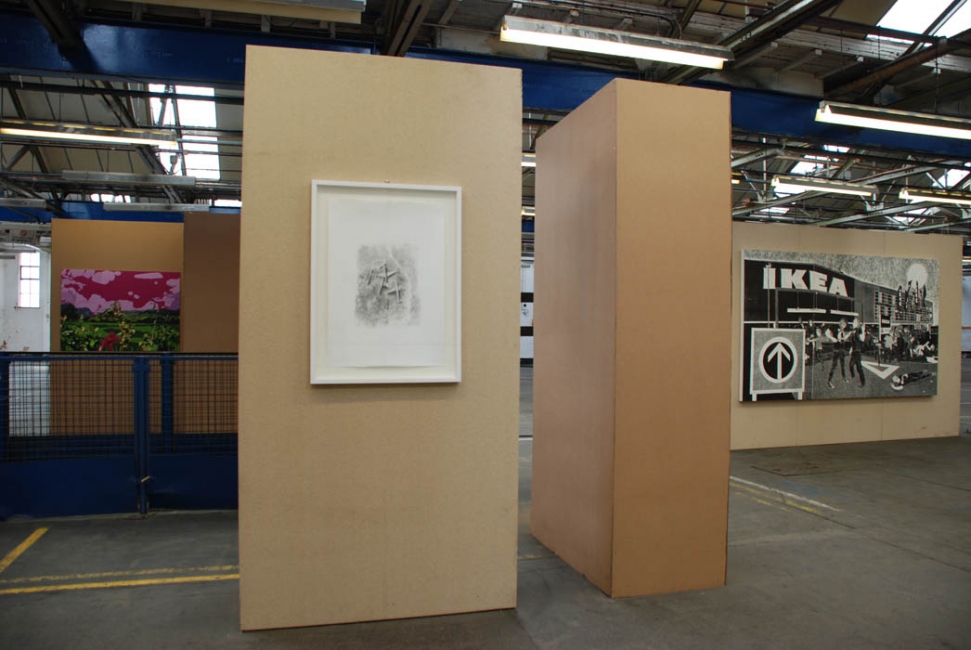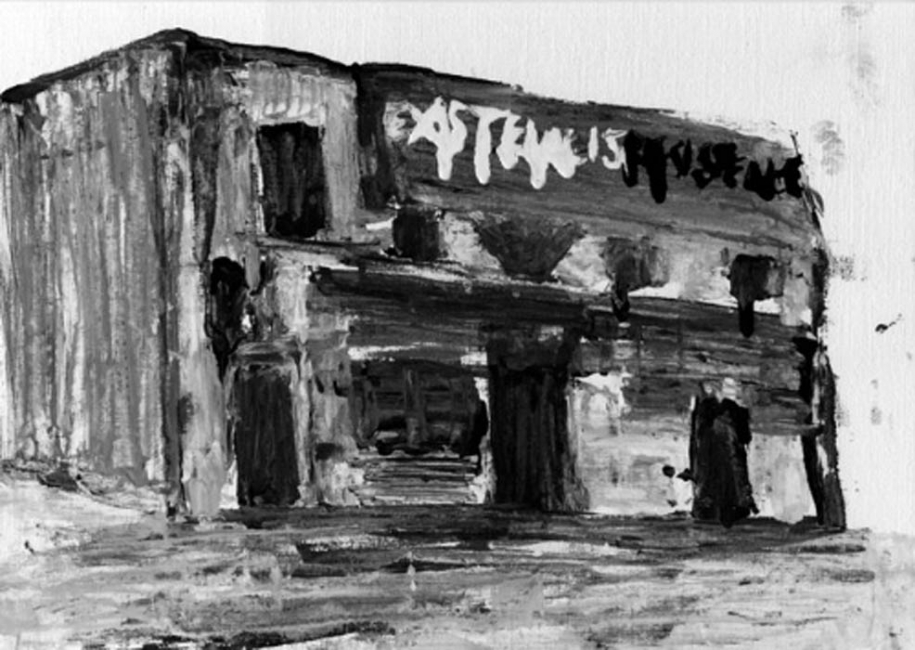The Space Between, Surrounds Our Desire
Adam Burton, Ryan McClelland, Tim Maslen and Jennifer Mehru, James Lander, Marina de Stacpoole, Florin Ungureanu, Stephen Felmingham, and Michael Cousin
Curated by Mona Casey
Venue – Digbeth, Birmingham
Oct 2009
The Space Between, Surrounds Our Desire began as an on-line exhibition recently commissioned by Axis, the website based resource for artists. The remit was to curate a show choosing from the huge representation of artists and their works. After spending many days looking through artistic profiles and images of art-work, I selected artists and very specific examples of their practice which loosely related to concepts around the political with respect to deterioration, destruction and decay; the text below accompanied the curated selection. With one exception I had never seen any of these artists work in the flesh, so to speak and had no real comprehension of the physicality, scale and presentation of their work.
In the ongoing development of an increasingly diverse range of mediums with which to present work not originally produced for such forms we continue to experience the artwork through ever more mediated means, such as U-tube, web-sites, etc. In an attempt to re-address and question the mode through which the original exhibition was chosen, these works are now presented in the format with which they were originally intended to be expressed.
This exhibition as part of The Event 09 presents a second experience of the work and seeks to question curatorial choices based on a mediated presentation, in an attempt to explore the problem of the ‘value of the artwork’ as related to the specific medium through which it is shown. The revelation of the artworks to the curator will only occur as they are being installed.
The Space Between, Surrounds Our Desire
On-line exhibition commissioned by Axis, May 2009
www.axisweb.org
Originally I approached this commission with the idea of looking for political work or work that dealt with Politics, but had no clear idea as to what particular arena of the political I would discover. As I investigated the Axis website I began to find works which had political content but found myself primarily focused on those which investigated ideas around deterioration, destruction and decay. Whether this was the wilful destruction of property or a battle against consumerism and ownership, as in McClelland’s and Cousin’s work; decay and abandonment as explored in Lander and Ungureanu’s work; or the deterioration of memory and authority as in Felmingham and Maslen & Mehra practice; in each of the works selected the artist is exploring some sense of an instigator’s righteousness or misplaced righteousness. Are these forces which are being represented within the unfolding events for good or evil? In the various paintings, installations and video etc. that are shown here, there appears to be an exploration of ambiguity and the narratives hover somewhere in that space between deliberate uncertainty and absolute interpretation. Looking at the work of these artists in a mediated format, without experiencing their physicality, I wonder if I’m missing the point, but these gaps in understanding parallel the non-conclusiveness’ of the work and this disturbance is interesting.
Adam Burton MA Exhibition photograph, 2007
Burton produces installations which incorporate a range of letterpress printed slogans on found and varied paper. The use of text has been adopted as an immediate means to engage the viewer and emerges from a tradition of activist and revolutionary posters. The slogans are constructed texts and reflect the artist’s interpretation of political issues, which he has identified as significant. Slogans such as ‘Do not despair’, ‘Begin kill, riot now’, ‘dream of socialism’, which authoritatively demand the viewer to actively engage in some act of non-passivity are juxtaposed with other observational statements like ‘Weak Bridge’ and ‘the power to ignore’.
Ryan McClelland, Wasteland Riot, 2008
McClelland uses traditional approaches to techniques such as printmaking and ceramics, and contemporizes them through an engagement with issues related to today’s society and youth culture. In ‘Wasteland Riot’ (2008) we are confronted with a large relief print, which images a series of random acts of violence, stabbings and fighting, taking place in front of an Ikea store. The store, so familiar a sign of consumer consumption, sets up a narrative which suggests that it is much more than a backdrop and is the cause of this brawl outside. The image acts as a kind of historical document, like Hogarth’s satirical prints, presenting humanity’s folly for all to see.
Tim Maslen and Jennifer Mehra, Because There is Nothing on this Green Earth that is stronger than, 2008
The installation ‘Because There is Nothing on this Green Earth that is stronger than’ (2008) comprising of animation, painted sculpture, a lightbox with lambda prints, film and video, is based on a military recruitment office in Times Square, New York. We are confronted with a box shape with a tantalising light display constructed as the American flag. The structure with its symmetry physically dominates the space and stands in contrast to the painted camouflaged mushroom and toadstools that emerge from the floor. The work questions the intriguing relationship between the American military might and other military forces (such as Kuwaiti, Egyptian, Bulgarian etc.) as represented by the various camouflage patterns on top of the organic forms.
James Lander Existence Is Resistance I, 2008
‘Existence is Resistance’ (2008), is a painting of what appears to be a run-down and empty building. Its isolation in the picture plain is reminiscent of built movie sets, a ghost space remaining long after the actors have gone and the action has been captured. The graffiti text on the frontage is a defiant act which screams the structure’s purpose and value in the face of its apparent non-use. The statement questions the legitimacy of ‘being’ in the face of apathy and neglect.
Marina de Stacpoole, Child’s Play, 2008
De Stacpoole digital collages are often based on photographic images of rural Asian landscapes juxtaposed with references from film and television. In ‘Child’s Play’ (2008) we are faced with a rich, highly-coloured environment, which could reference a computer game or hyper-real spaces evoked in computer animation and avatar sites. A solitary soldier manoeuvres through the vegetation, its pink colouring relating more to toys and fantasy than the real world. We are left considering our distanced relationship to warfare despite the 24-hour coverage of world events unfolding on our televisions and computer monitors.
Florin Ungureanu, Industrial Ruins, 2008
Ungureanu’s practice explores ideas of power, politics and history. In the painting ‘Industrial Ruins’ (2008) we are presented with an image created from a minimal colour palette. The circular work is composed primarily of two sections, with a formal separating of the sky from the land. The aerial perspective gives a bird’s eye view of the industrial complex. We are given visual access to the principal architectural structures but are denied the details of its design and function, because of our distance from it. The site’s layout is reminiscent of photographic images of the remains and deteriorating ruins of an ancient civilisation. The work serves to some extent as a historical document of an industrial age, but how this edifice came to be there, and why this site is now left to deteriorate, is left to the imagination.
Stephen Felmingham Dying god, 2009
‘Dying god’ (2009) is a drawing from a series of work where flight and cargo vehicles are adopted as a metaphor for collective memory and forgetting. The dream like qualities within the work, serve as a momentary diversion from what might be a significant event. Although unable to locate the specific nature of what is unfolding, there is implied -perhaps because of the title- the destruction of something on the ground below. The spatter of marks emerging from a tonally darker nucleus, suggest a number of possible narrative readings. The image captures a particular moment in time or memory and leaves you grappling for its meaning.
Michael Cousin Anytime Whatevers iii – No Comenzano del Fuego, 2006
‘Anytime Whatevers iii – No Comenzano del Fuego’ (2006) (We didn’t start the fire) is a video work of just under three minutes long, which sets up a dialogue between an idealistic yet misplaced arsonist and another anonymous individual, who could be a reporter, interviewer or passer-by. The exchange between these individuals becomes quite heated as the fire-starter tries to justify his rationale for burning others’ property. The victims’ focus on consumption and ownership as reasoned by the protagonist, serve as a target. In a bid to free or save humanity from itself, he gives himself permission to burn their property, which he considers to hold society back and distract them from what is important. The work questions the nature and justification adopted by destructive individuals to justify their ideology and subsequent detrimental actions.
